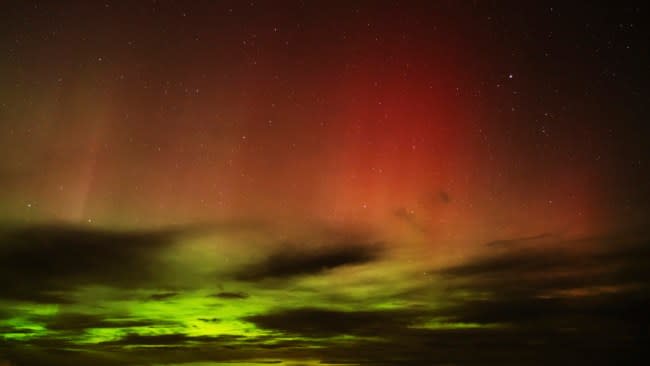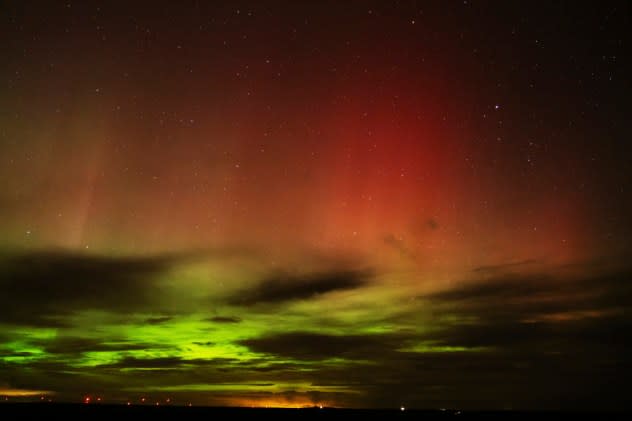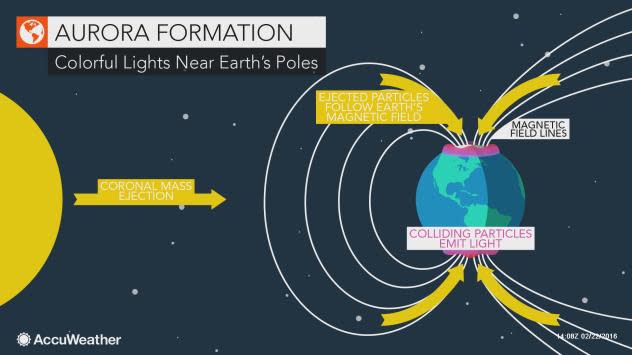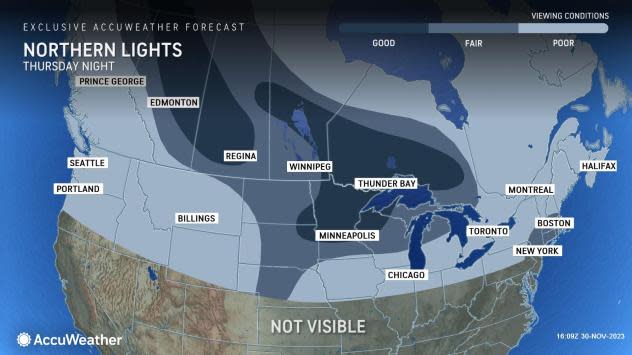US has the rare chance to see the northern lights Thursday night
 |
An aurora borealis, also known as the northern lights, is seen in the night sky in the early morning hours of Monday, April 24, 2023, near Washtucna, Wash. (AP Photo/Ted S. Warren) |
Seeing the glow of the northern lights is a bucket list item for many, and some people may soon have their dreams come true as the aurora could glow over more than a dozen states on Thursday night.
Earlier this week, an eruption on the sun hurled a massive cloud of charged particles toward the Earth, an event known as a coronal mass ejection (CME). NOAA's Space Weather Prediction Center said that a "strong geomagnetic storm" is likely as the CME slams into Earth's magnetic field.
Events this powerful can allow people as far south as Pennsylvania, Missouri, Colorado and Northern California to see the glow of the celestial lights with their own eyes.
 |
To the naked eye, the aurora will look like a green or red glow in the northern sky.
The northern lights may be seen even farther south by photographers who take long-exposure images of the night sky, as cameras can capture more light over an extended period when compared to human eyes.
Earlier this year during a similar, but stronger, geomagnetic storm, photographers as far south as Arizona snapped images of the lights.
The weather could be problematic for many folks across the northern half of the United States who have hopes of catching a glimpse of the aurora on Thursday night or Friday morning.
Widespread clouds are in the forecast for most of the Northwest and northern Rockies, but breaks in the clouds should provide some views of the northern sky for skywatchers across parts of the Plains.
Clouds are also a concern for the Ohio Valley and into the Northeast. There could be some breaks in the clouds around southern New England, but residents in these areas will need to escape the light pollution from nearby cities to have a chance at seeing the aurora.
The best viewing conditions are predicted across the Canadian Prairies and into Ontario, Minnesota, northern Wisconsin and the Upper Peninsula of Michigan.
 |
Another factor that could hinder the light show is the moon, which is in its waning gibbous phase. The moon will rise during the middle of the night, emitting bright light that could make it more difficult to see the glow of the aurora.
For the best chance of seeing the aurora, experts recommend having a clear view of the northern sky and keeping the bright moon out of your line of sight.
Want next-level safety, ad-free? Unlock advanced, hyperlocal severe weather alerts when you subscribe to Premium+ on the AccuWeather app. AccuWeather Alerts™ are prompted by our expert meteorologists who monitor and analyze dangerous weather risks 24/7 to keep you and your family safer.





